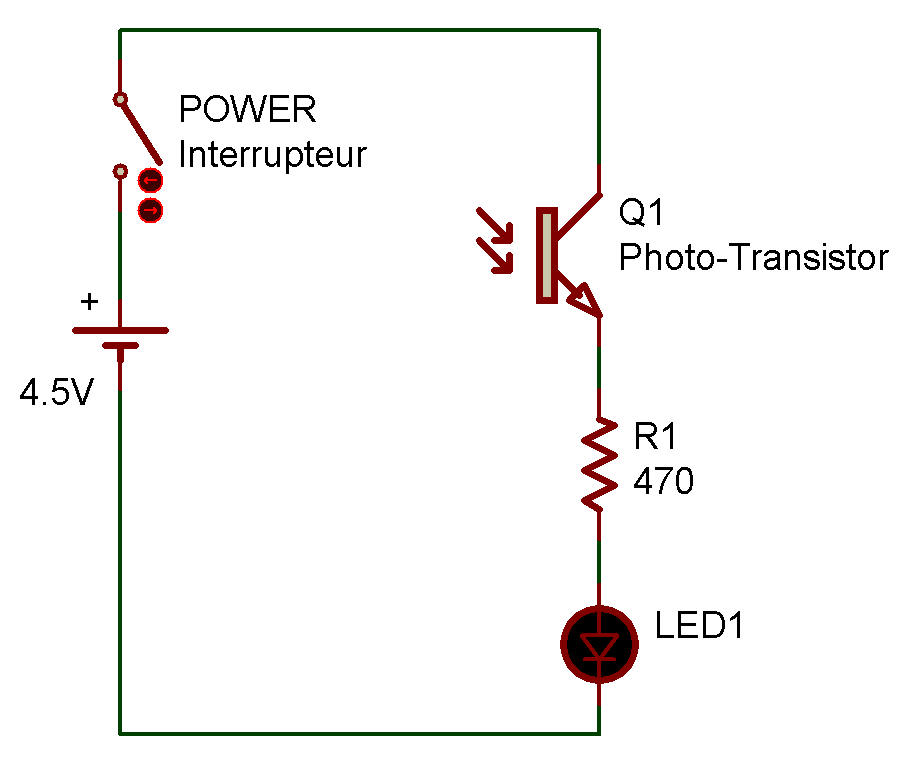
Basic photo-transistor operation

In this project, you are going to make a circuit in order to understand the basic operation of photo-transistors. You will notice that the photo-transistor has a symbol similar to that of the transistor, but it has no base terminal.
In the transistor, the current flowing into the base is amplified and the collector current flows. In the photo-transistor, the incoming light acts like the base current and the collector current flows according to the amount of incoming light.
In this circuit, when the photo-transistor receives intense light, it turns ON and the LED 1 lights up. When the incoming light is weak, LED 1 has a brightness proportional to the incoming light.
After wiring this project, turn power ON. LED 1 is lit when light is falling on the photo-transistor. Slowly move your hand over the photo-transistor. What happened?
You should have seen LED 1 get dimmer until it finally goes out. Photo-transistors are applied as photo sensors. They detect ON/OFF switching of light in non-contact mode, without the need of a mechanical contact. For example, if you direct a beam to a photo-transistor, you can count how may objects of interest have crossed the beam.
